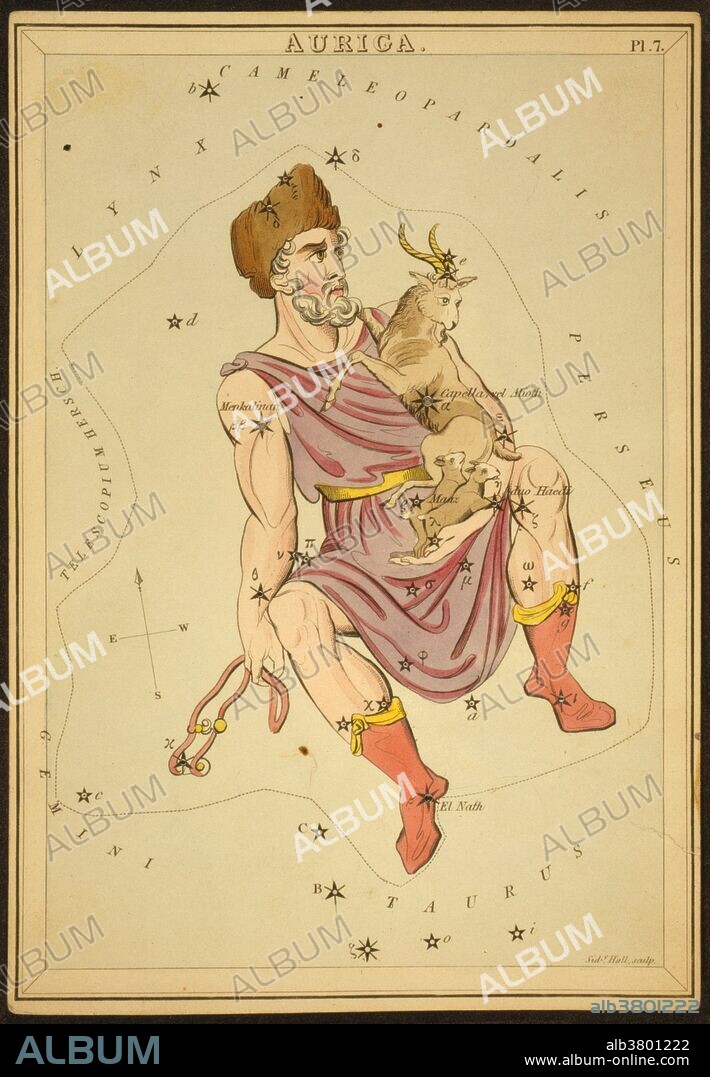alb3801222
Auriga Constellation, 1825

|
Zu einem anderen Lightbox hinzufügen |
|
Zu einem anderen Lightbox hinzufügen |



Haben Sie bereits ein Konto? Anmelden
Sie haben kein Konto? Registrieren
Dieses Bild kaufen.
Nutzung auswählen:

Titel:
Auriga Constellation, 1825
Untertitel:
Siehe automatische Übersetzung
Astronomical chart showing Auriga the Charioteer holding a ram, two ewes, and a bridle forming the constellation. Auriga is one of the 48 constellations listed by the 2nd century astronomer Ptolemy and remains one of the 88 modern constellations defined by the International Astronomical Union. Located north of the celestial equator, its name is the Latin word for charioteer, associating it with various mythological charioteers including Erichthonius and Myrtilus. Auriga is most prominent during winter evenings in the Northern Hemisphere, along with the five other constellations that have stars in the Winter Hexagon asterism. In Chinese mythology, Auriga's stars were incorporated into several constellations, including the celestial emperors' chariots, made up of the modern constellation's brightest stars. Urania's Mirror is a boxed set of 32 constellation cards first published by Samuel Leigh of the Strand, London, in or shortly before 1825. An unidentified lady, referred to by her nom-de-plume, Jehoshaphat Aspin, designed these whimsical astronomy cards. The engraver was Sidney Hall.
Bildnachweis:
Album / LOC/Science Source
Freigaben (Releases):
Bildgröße:
2700 x 3895 px | 30.1 MB
Druckgröße:
22.9 x 33.0 cm | 9.0 x 13.0 in (300 dpi)
Schlüsselwörter:


 Pinterest
Pinterest Twitter
Twitter Facebook
Facebook Link kopieren
Link kopieren Email
Email
